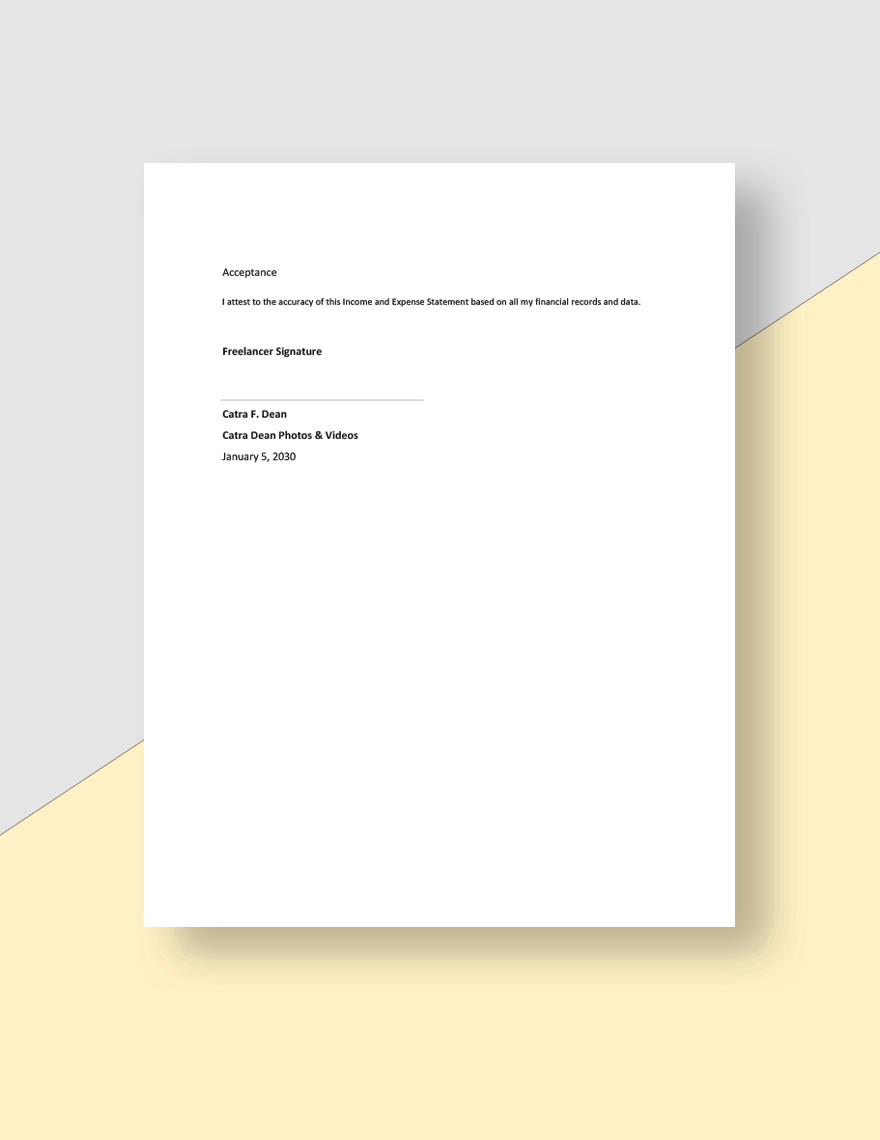Freelance photography can be a rewarding career, but income expectations can vary widely. Many factors, such as your experience, niche, and client base, can affect how much you earn. Whether you're just starting out or have years of experience, it's important to have a realistic idea of what to expect in terms of income. Understanding how much you can make will help you set achievable goals and plan for a sustainable career in photography.
Factors That Affect a Freelance Photographer’s Income

Several factors can influence how much a freelance photographer earns. These include:
- Experience: More experienced photographers often command higher rates due to their proven skills and portfolio.
- Specialization: Photographers who specialize in high-demand areas like weddings, corporate events, or real estate tend to earn more.
- Location: Freelance photographers in major cities or areas with high demand may earn more than those in rural locations.
- Marketing and Networking: Your ability to attract clients through marketing and networking can directly affect your income.
- Reputation and Reviews: Positive client reviews and a strong reputation in your field can lead to higher-paying jobs.
- Equipment: Having high-quality, professional equipment can allow you to charge higher rates, but it also involves significant investment.
- Seasonality: The type of photography you specialize in can also impact your income during certain seasons. For example, wedding photography may peak in the summer months.
Also Read This: Does Fiverr Work in Australia? Exploring Opportunities and Insights
Understanding the Market for Freelance Photography

Before setting your rates, it's essential to understand the market for freelance photography. This includes knowing who your competitors are and what clients are willing to pay for photography services. Here are some key points to consider:
- Market Demand: In high-demand areas, clients may be willing to pay premium prices for quality photography.
- Client Budget: Different types of clients have different budgets. Corporate clients may have higher budgets compared to individuals hiring a photographer for personal use.
- Market Saturation: In a saturated market, you may need to differentiate yourself with a unique style, better customer service, or more flexible pricing.
- Competitive Pricing: To stay competitive, it's important to keep track of your competitors’ pricing but also ensure that your prices reflect your skills and experience.
It's important to research local and online photography markets, as well as look at online platforms like Fiverr, to gauge going rates for different types of photography work.
Also Read This: What Percent Does Fiverr Take from Sellers?
How to Set Your Photography Rates
Setting your photography rates is one of the most important steps in your freelance career. It’s essential to strike a balance between charging what you're worth and being competitive in the market. Here are some factors to consider when determining your rates:
- Hourly vs. Project Rates: Decide whether you want to charge hourly or by project. Hourly rates work well for shorter, less predictable jobs, while project rates are ideal for more extensive work like weddings or corporate shoots.
- Cost of Doing Business: Calculate your costs—equipment, software, travel, insurance, and other expenses—and make sure your rates cover these costs while still allowing for profit.
- Experience Level: If you’re just starting out, it’s normal to charge less than someone with years of experience. However, don’t undervalue yourself. As you gain experience, you should increase your rates.
- Client Type: Rates may differ depending on the type of client. Corporate clients or commercial work can often afford higher rates than individual clients booking personal photoshoots.
- Market Research: Look at what other photographers in your area or niche are charging. This can give you a good idea of what’s considered competitive and reasonable in the current market.
- Offer Packages: Many photographers offer packages that include a set number of photos, hours of shooting, and edits. This can simplify pricing and attract clients looking for clear, predictable costs.
Also Read This: How to Launch Your Career as a Freelance Tour Guide
How Experience Impacts Your Earnings as a Freelance Photographer
Experience plays a significant role in the earnings potential of a freelance photographer. The more experience you have, the higher your earning potential. Here’s why experience matters:
- Skill Level: Experienced photographers have developed their skills over time, making them more efficient and capable of producing higher-quality work. This expertise justifies charging higher rates.
- Reputation: As you gain experience, you build a reputation. Clients are more likely to pay premium rates for someone with proven work and a portfolio that reflects their abilities.
- Client Trust: Experienced photographers are often trusted with more complex projects. As you build a client base and get repeat business, you'll be able to command higher prices.
- Specialization: Over time, you may specialize in certain areas, such as wedding photography or commercial shoots. Specialization allows you to target higher-paying clients who are looking for experts in those areas.
- Efficient Workflow: With experience, you become more efficient in your workflow. You can complete tasks faster, which can lead to more jobs and increased income.
- Negotiation Skills: Experienced photographers are better at negotiating higher rates. They know how to handle pricing discussions and can justify their rates based on their portfolio and past work.
Also Read This: Understanding Recording Length on Fiverr: What You Need to Know
How to Increase Your Income as a Freelance Photographer
As a freelance photographer, increasing your income requires a combination of smart strategies, skill enhancement, and effective marketing. Here’s how you can boost your earnings:
- Offer Additional Services: Upsell services like photo editing, printing, or albums to your clients. Offering a wider range of services can increase the value of each booking.
- Expand Your Niche: While specializing in a niche can be profitable, expanding into other areas can help you attract a larger client base. For example, if you’re a portrait photographer, consider expanding into family or corporate photography.
- Raise Your Rates Gradually: As your experience grows, don’t be afraid to raise your rates. Make sure you’re continually offering great value so your clients will understand the increase.
- Increase Your Online Presence: Invest time in building a strong online presence through a website, social media, and platforms like Fiverr. This can help attract more clients, both local and international, and boost your income.
- Network with Other Professionals: Building relationships with other photographers, event planners, and creatives can lead to referrals and collaborations, which can increase your business opportunities.
- Get Reviews and Testimonials: Positive reviews from clients help build your credibility. Display these reviews on your website and social media, as they can attract higher-paying clients who are looking for trustworthy professionals.
- Develop Repeat Clients: Offering excellent service and staying in touch with previous clients can lead to repeat business. Repeat clients are often willing to pay more for someone they trust.
- Streamline Your Process: Efficient workflows lead to more productivity. By streamlining processes like booking, shooting, and editing, you can take on more clients and increase your income.
Also Read This: How to Change Your Fiverr Forum Profile Picture
Challenges Freelance Photographers Face in Income Generation
Freelance photography offers a lot of freedom, but it also comes with its challenges. Income generation can be unpredictable, and many factors play into how much you earn. Below are some common challenges freelance photographers face when trying to generate a stable income:
- Inconsistent Work: Unlike traditional jobs with regular paychecks, freelance photographers often experience periods of feast and famine. Some months may be packed with clients, while others might have little to no work.
- Competition: The photography industry is highly competitive. With so many talented photographers available, standing out and securing clients can be difficult, especially when you’re just starting.
- Pricing Pressure: Determining the right price can be a struggle. Many photographers face pressure to lower their rates to compete with others, which can lead to underpricing and insufficient income.
- Marketing Challenges: Effective marketing is key to attracting new clients, but many photographers struggle with it. From building an online portfolio to managing social media, marketing can be time-consuming and require specialized skills.
- Client Expectations: Some clients may have unrealistic expectations regarding the cost and time required for photography. Managing these expectations while maintaining a professional relationship can be a challenge.
- Equipment and Maintenance Costs: Photography equipment is expensive, and maintaining it can eat into your profits. Cameras, lenses, lighting, and software updates are ongoing costs that need to be factored into your rates.
- Seasonal Fluctuations: Some types of photography, such as weddings or outdoor shoots, may only be in demand during certain seasons. During off-seasons, generating income can become more difficult.
Also Read This: How Much You Can Make as a Freelance Writer
FAQ
1. How much can I expect to earn as a freelance photographer?
Your earnings as a freelance photographer depend on factors such as your experience, niche, location, and client base. Some photographers earn a modest income, while others in high-demand niches can make six figures. Setting clear pricing and continually improving your skills can increase your earning potential.
2. How do I find clients for my photography business?
Finding clients starts with building an online presence. Create a professional website, use social media, and leverage platforms like Fiverr to reach potential clients. Networking with local businesses and other photographers can also open up opportunities.
3. Should I work for free when starting out?
While it’s tempting to offer free work to build your portfolio, it’s important not to undervalue yourself. Consider offering discounted services instead, so you can still earn while gaining experience. Always ensure your rates reflect your skills.
4. How can I increase my photography rates?
As you gain more experience, build a strong portfolio, and receive positive client feedback, you can increase your rates. Gradually raise your prices over time, making sure to communicate the value you bring to your clients.
5. What should I do if business slows down?
If business slows down, it’s time to revisit your marketing strategy. Consider offering promotions, trying new niches, or reaching out to past clients for repeat business. Diversifying your services can also help keep income steady.
Conclusion
While freelance photography offers great potential for earning, it also comes with its set of challenges. Understanding the factors that affect your income, setting appropriate rates, and marketing your services effectively can help you create a sustainable business. It's important to stay adaptable and continue improving your skills, as this will allow you to overcome challenges and increase your earning potential over time. With dedication and strategic planning, freelance photographers can achieve long-term success and financial stability.




